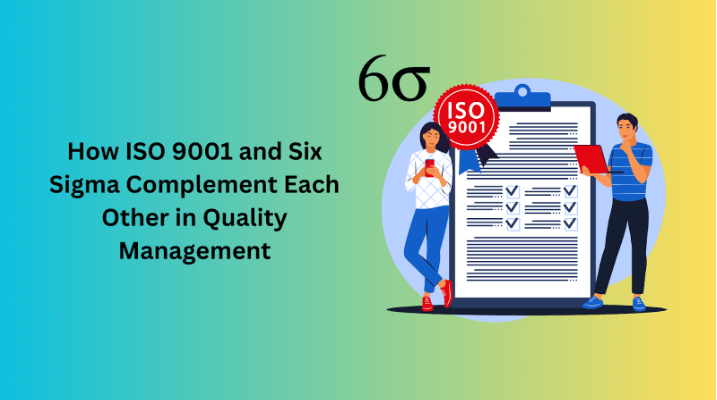Two well-known approaches, Six Sigma and ISO 9001 Certification, have become foundations of success for organisations pursuing excellence. These approaches are now synonymous with quality and process improvement in many different sectors. While some people might see ISO 9001 vs Six Sigma as competing methodologies, the fact is that they work best together since they each have their advantages. This blog post will explore how various techniques work together to enhance organisational effectiveness, client satisfaction, and overall success.
ISO 9001 Certification
The International Organisation for Standardisation (ISO) created the ISO 9001 standard, which outlines the requirements for a quality management system (QMS). The main goal of ISO 9001 is to support businesses in consistently delivering goods and services that satisfy client needs and enhance overall performance. It is a key framework for implementing organised and successful quality management procedures.
Customer focus, leadership commitment, process methodology, and continuous improvement are some major tenets of ISO 9001. Organisations may simplify their processes, lower inefficiencies, and boost customer satisfaction by using the ISO 9001 principles. An organisation’s quality management activities may be built on a solid basis provided by this accreditation.
Six Sigma
Contrarily, Six Sigma is a data-driven technique that tries to find and fix process flaws to improve performance and lower variance. The DMAIC (Define, Measure, Analyse, Improve, Control) technique is a structured strategy developed by Motorola in the 1980s for the systematic solution of difficult issues.
The primary idea of Six Sigma is to reduce faults to fewer than 3.4 per million chances to achieve almost flawless quality. Six Sigma practitioners may drive continuous improvement projects and make educated judgements using statistical tools and methodologies. Consequently, processes run more smoothly, produce less waste, and improve overall quality.
The Complementary Nature of ISO 9001 and Six Sigma
Both Six Sigma and ISO 9001 Certification strongly emphasise enhancing business operations and client happiness, but they go about it in different ways. By developing a strong quality management system and focusing on customer-centricity and continuous improvement, ISO 9001 lays the foundation. On the other side, Six Sigma’s analytical strategy and statistical methodology assist in locating and fixing certain process problems, which results in improved performance.
Customer Satisfaction
Although both Six Sigma and ISO 9001 Certification are concerned with enhancing organisational procedures and customer satisfaction, they approach the task differently. The foundation is laid by ISO 9001, which creates a strong quality management system and emphasises customer-centricity and continuous improvement. On the other side, Six Sigma’s statistical methodology and analytical approach assist in pinpointing and fixing certain process problems, resulting in optimised performance.
Continuous Improvement Synergy
The DMAIC method used in Six Sigma and the continuous improvement tenet of ISO 9001 are perfectly compatible. The DMAIC technique supports the idea of ongoing process analysis and data-based improvement, directly supporting the ISO 9001 philosophy of ongoing improvement.
Structured Approach
Organisations can adopt a QMS using the structured framework provided by ISO 9001. Similarly, Six Sigma provides a clear technique (DMAIC) to approach complicated issues methodically. Combining these two methods results in a more comprehensive and effective approach to quality management for organisations.
Data-Driven Decision Making
The Six Sigma focus on data-driven decision-making gives ISO 9001’s process improvement initiatives additional dependability. Organisations may make well-informed decisions and reduce the dangers associated with irrational decision-making by relying on statistical analysis and evidence-based insights.
Also Read: Why Is It Difficult to Form a Limited Company in the UK
Conclusion
Six Sigma and ISO 9001 Certification are strong partners rather than rivals in the quest for greater quality management. A solid quality management system may be built based on ISO 9001, which also establishes the principles of customer-centricity and ongoing development. On the other hand, by identifying opportunities for improvement and assisting organisations in achieving almost flawless processes, Six Sigma’s data-driven methodology and analytical approaches increase the efficacy of ISO 9001.




